One of the most memorable experiences we had in Cappadocia was joining a group of local women in a rural village house to learn how to make gözleme—a traditional Turkish pancake. This wasn’t just a cooking class; it was an invitation into their home, their kitchen, and their way of life. From the first step into the courtyard, with the smell of wood smoke in the air, to the last delicious bite of our handmade pancakes, the experience was a feast for all the senses.
We booked this unique activity through this Viator experience, and it turned out to be one of the most intimate, authentic encounters we’ve had in the region.
The warm welcome
When we arrived, we were greeted with genuine smiles and a spread of ingredients already waiting on low wooden tables. The women wore colorful patterned skirts and aprons, their hands dusted with flour from an early start. A few chairs were set up, but the real work—and fun—was happening on the floor, where round cushions surrounded the workspace.
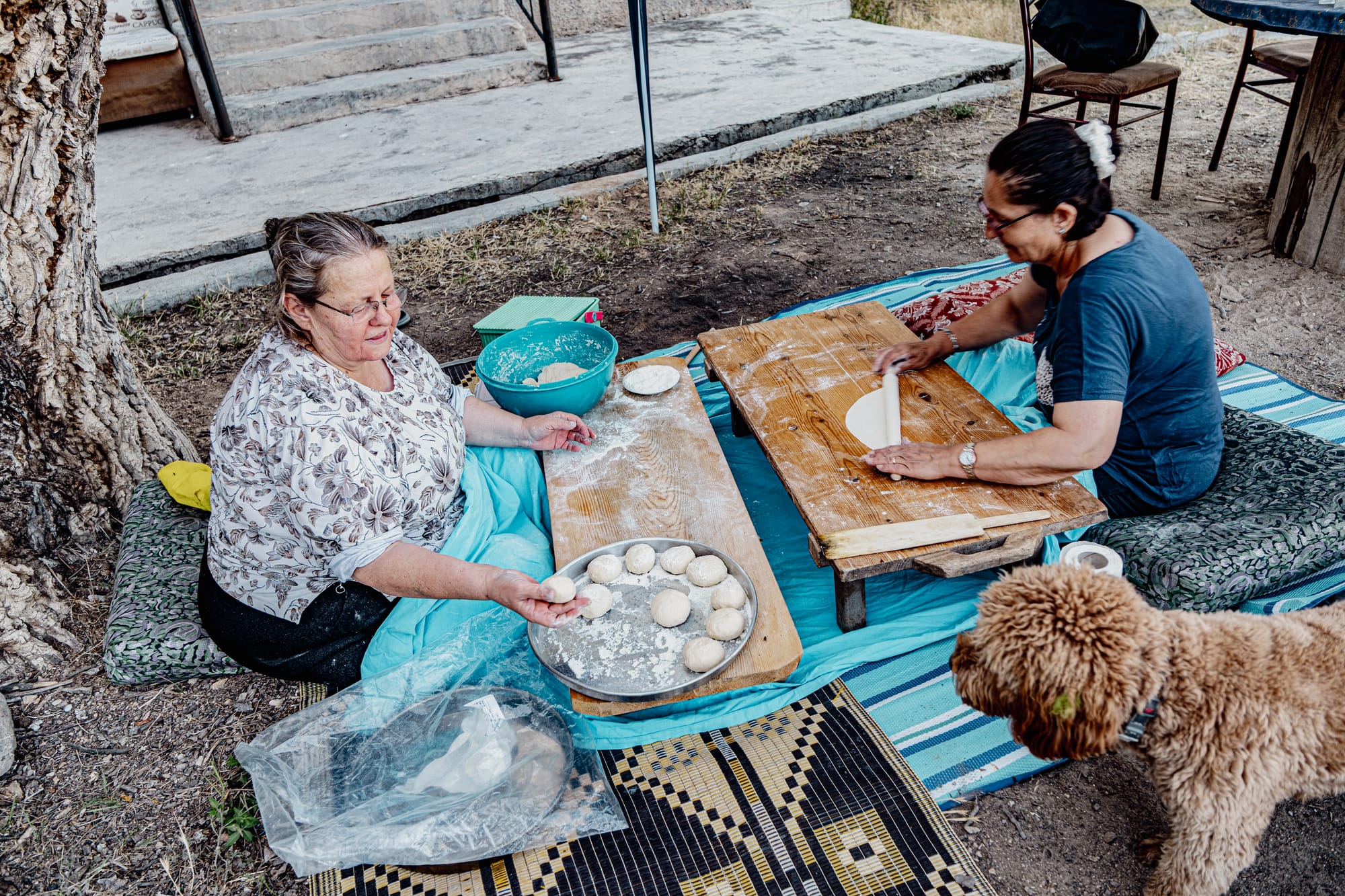
The setting itself was charming: a quiet courtyard shaded by a large tree, with the clink of metal utensils and the occasional laughter from the women preparing for our lesson. The air was fragrant with the earthy scent of freshly dug potatoes, mingled with the faint smokiness from the outdoor stove.
Preparing the dough
We began with the dough—a simple mix of flour, water, and a pinch of salt. The women showed us how to knead it until it reached the perfect elasticity. Their hands moved rhythmically, pressing and folding, pressing and folding, as if in tune with a silent beat. When it was our turn, we felt the cool, slightly tacky texture under our palms, the dough giving way yet pushing back just enough to let us know it was alive.
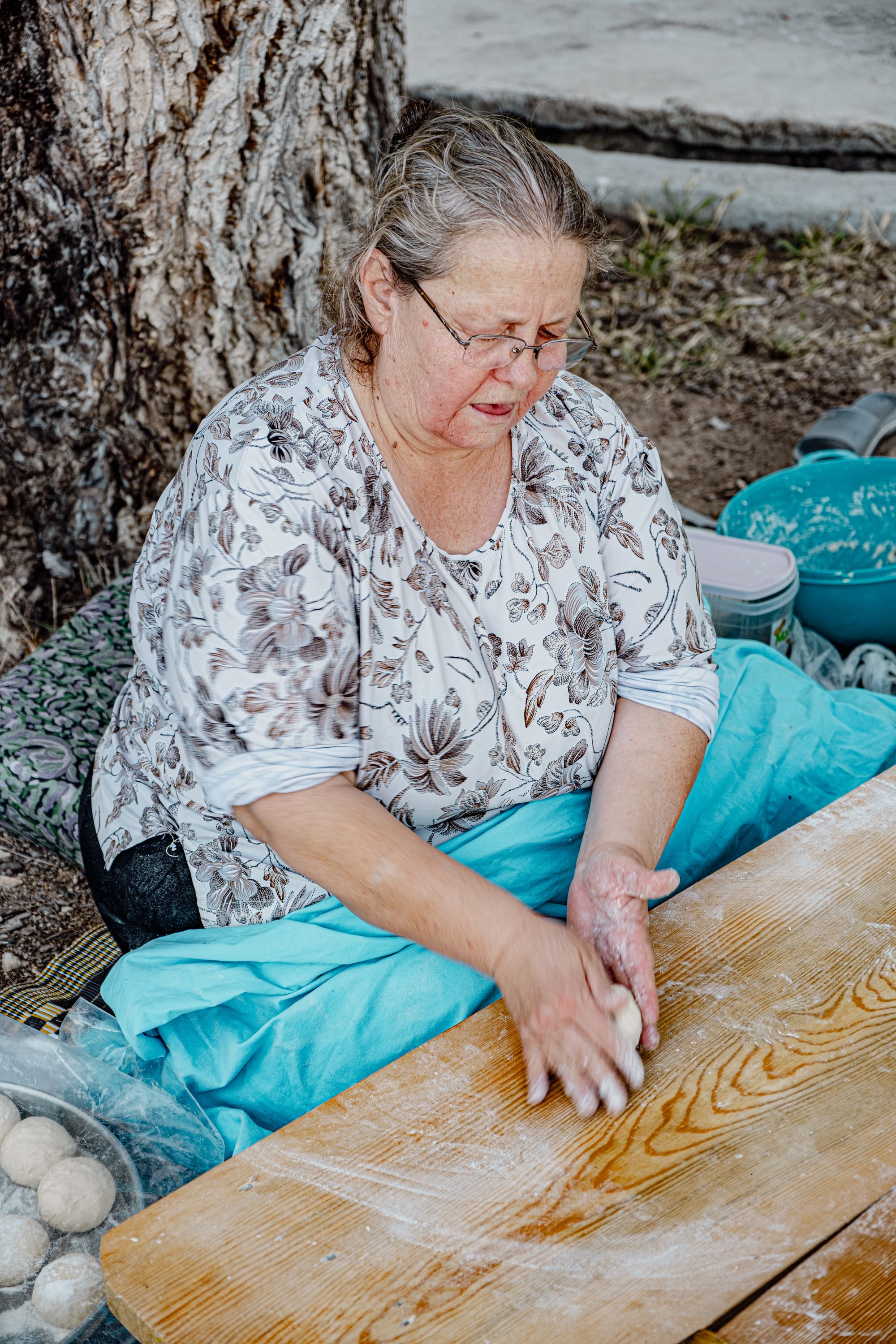
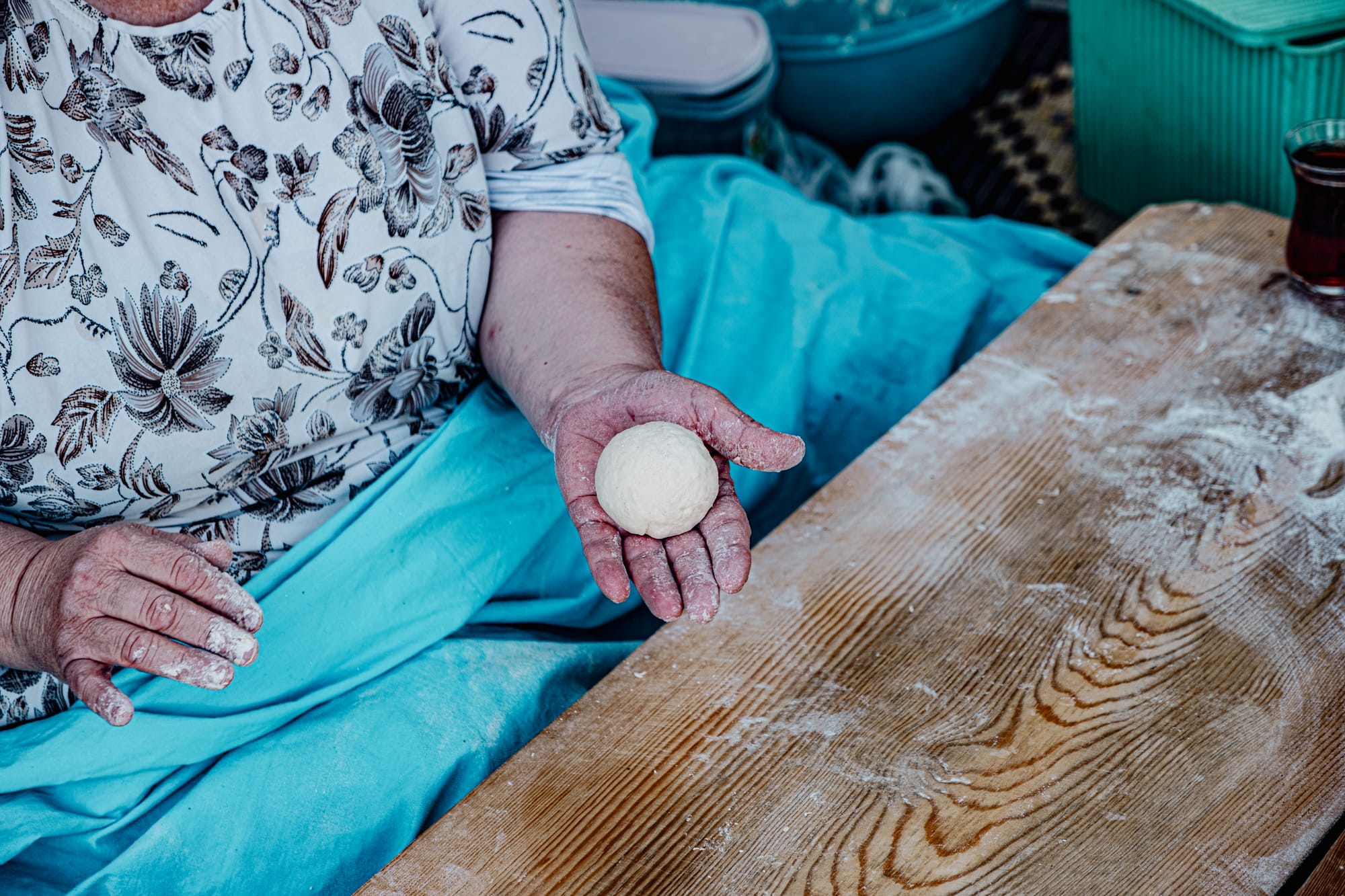
Local woman shaping and rolling a ball of dough for gözleme
Once kneaded, the dough was rolled into small, plump balls.
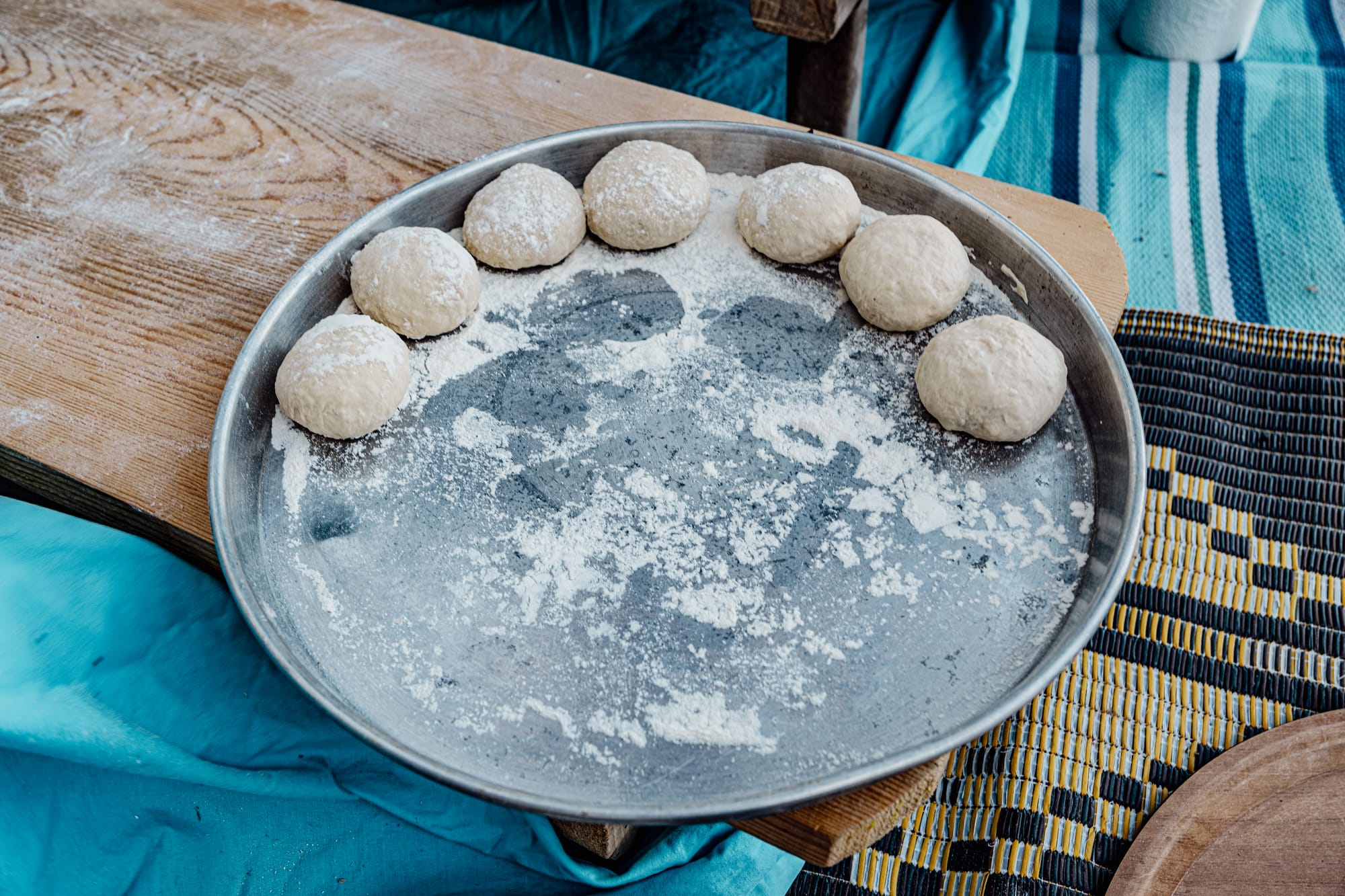
The women’s hands moved with practiced speed, dusting each one lightly with flour before setting it aside on a tray. The sight was beautiful in its simplicity — a row of smooth, round dough balls, each one a promise of the delicious pancake to come.
Rolling and filling
The next step was rolling out the dough. Using long, thin rolling pins, the women stretched each ball into a paper-thin circle. The rolling pin made a gentle, almost whispering sound as it slid back and forth over the dough. We tried our hand at it, and quickly learned that making an even, perfectly round sheet was harder than it looked.
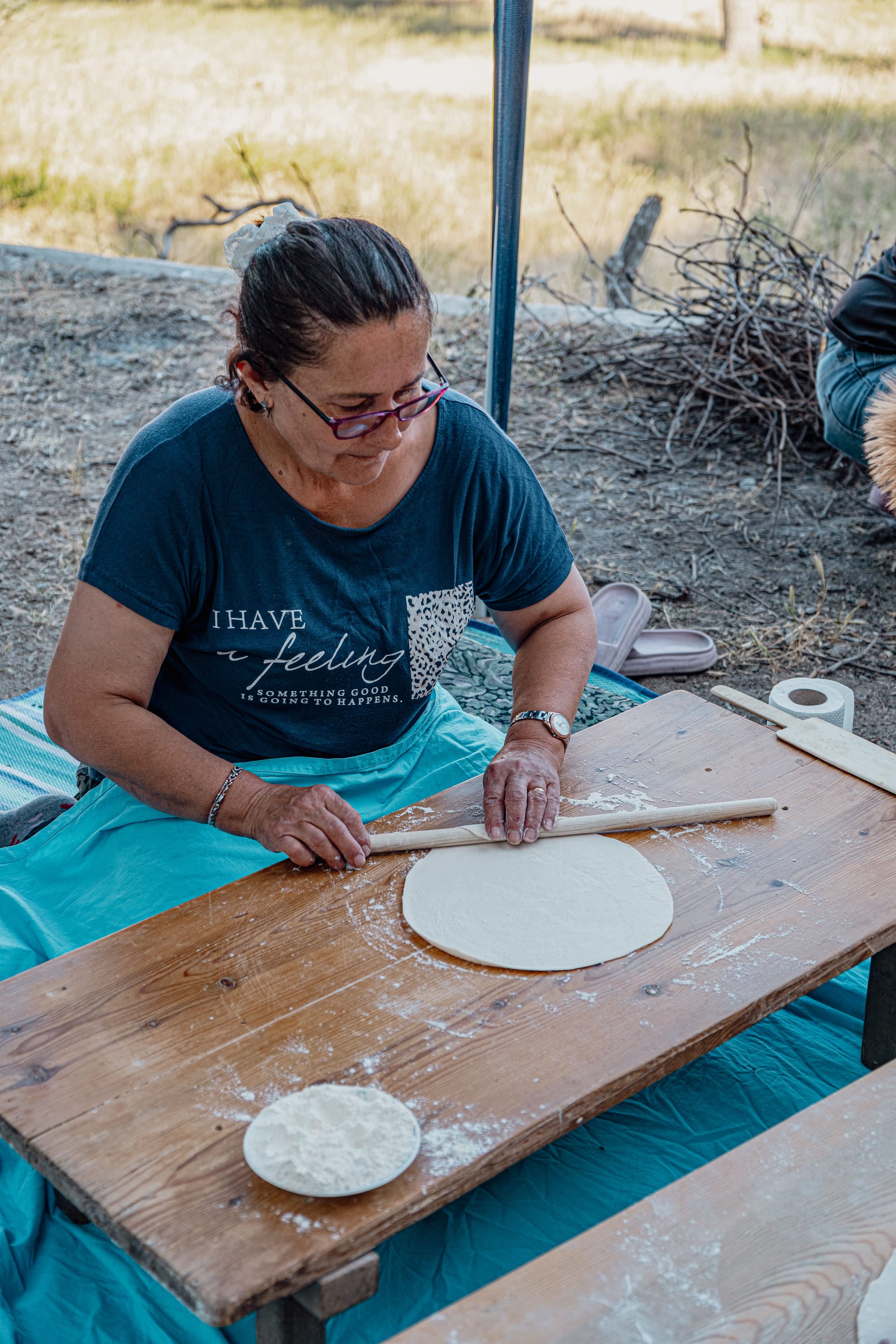
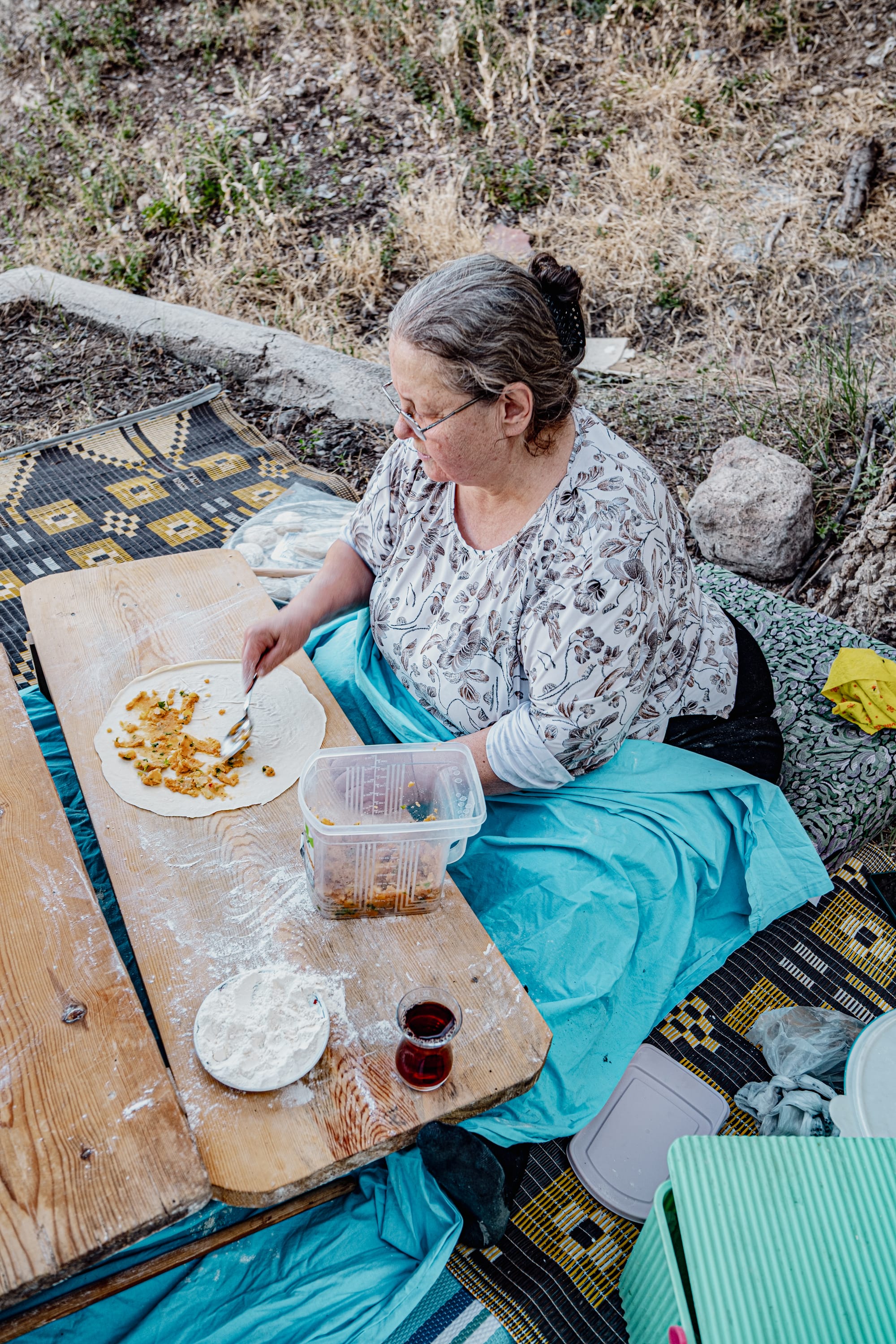
Rolling and filling fresh gözleme dough with herby potato mash in a Cappadocian village
For the filling, they had prepared a vegan-friendly herby potato mash—soft, fragrant, and still warm. The mash was flecked with chopped parsley and green onions, giving it a fresh, bright aroma. We scooped a generous portion onto the dough, spreading it evenly before folding it over and pressing the edges shut. The weight of the filled pancake in our hands felt satisfying, like holding a small bundle of comfort.
Cooking over the fire
The gözleme were cooked on a large, domed griddle called a sac, placed over a wood-fired stove. As the pancakes hit the hot surface, they sizzled faintly and began to release their aromas—the toasty scent of browning dough mingling with the herbal notes of the filling.
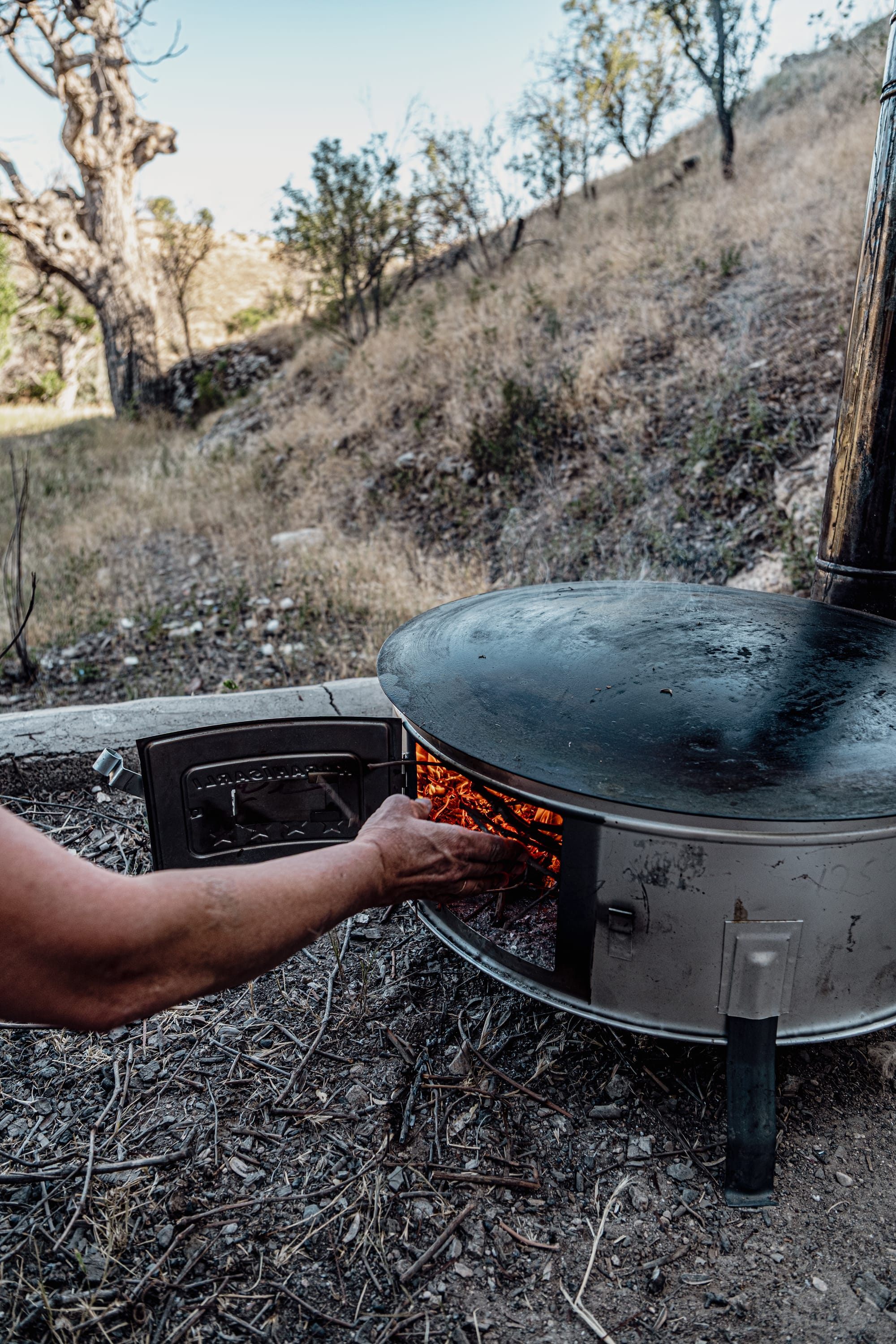
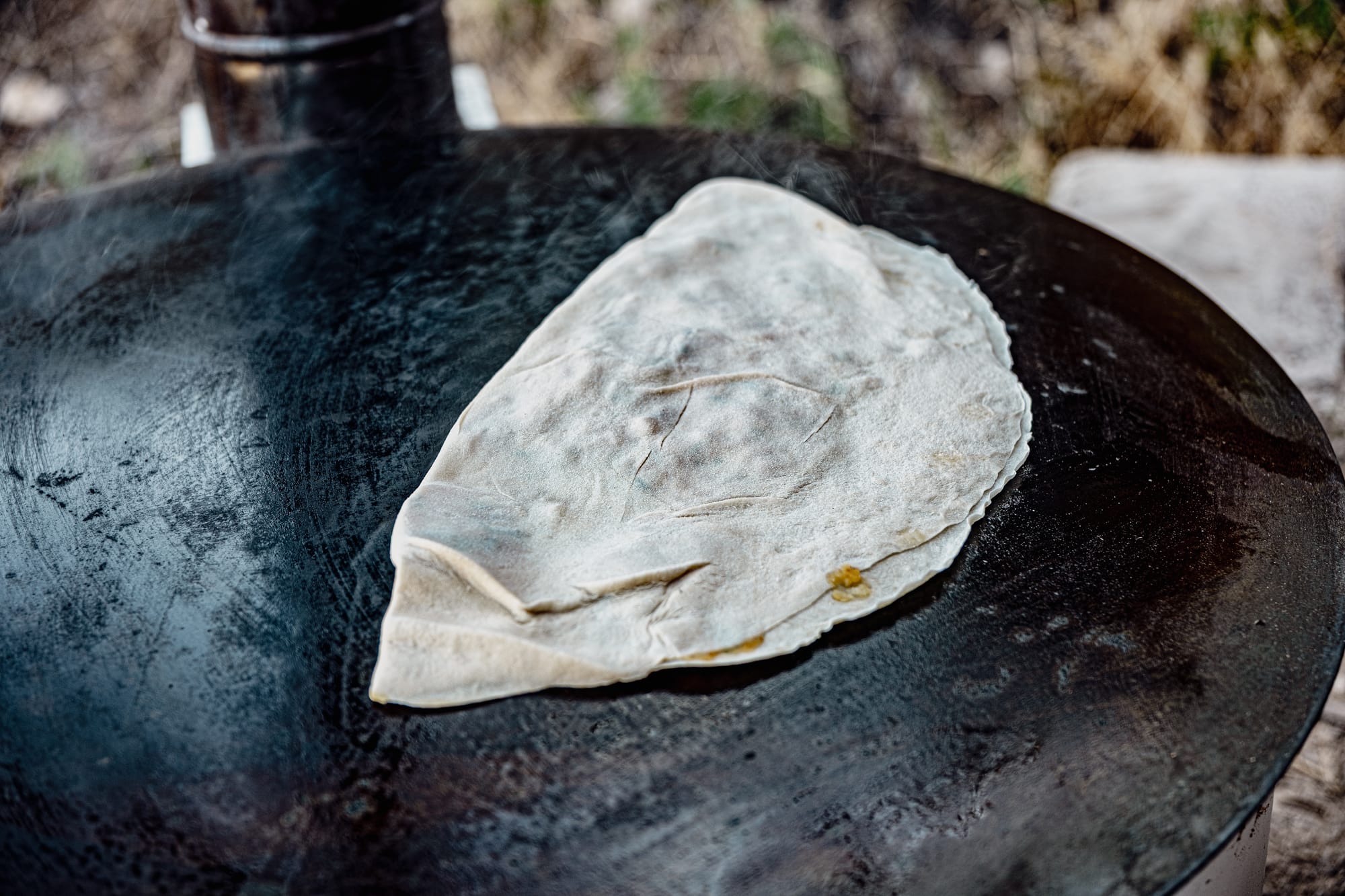
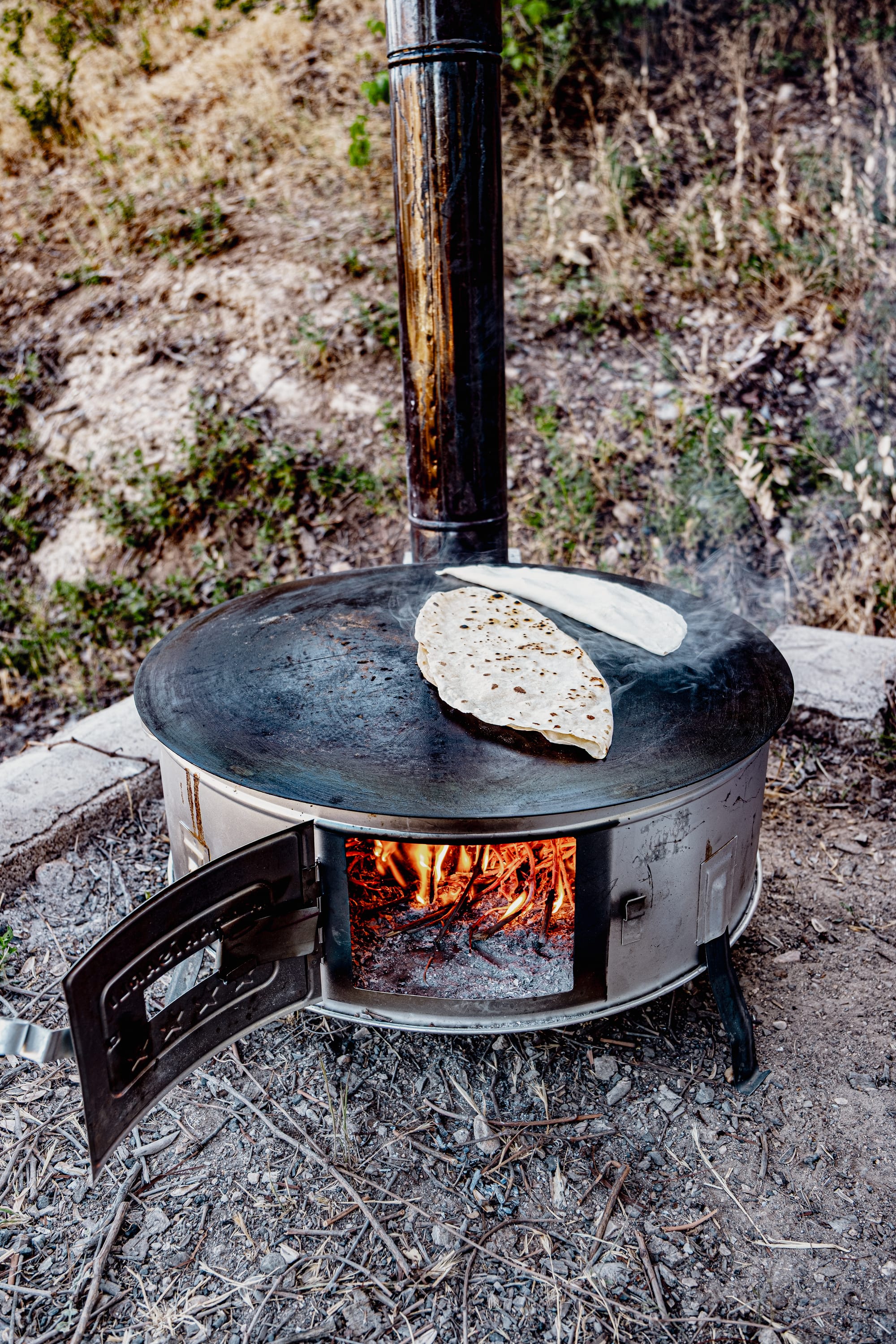
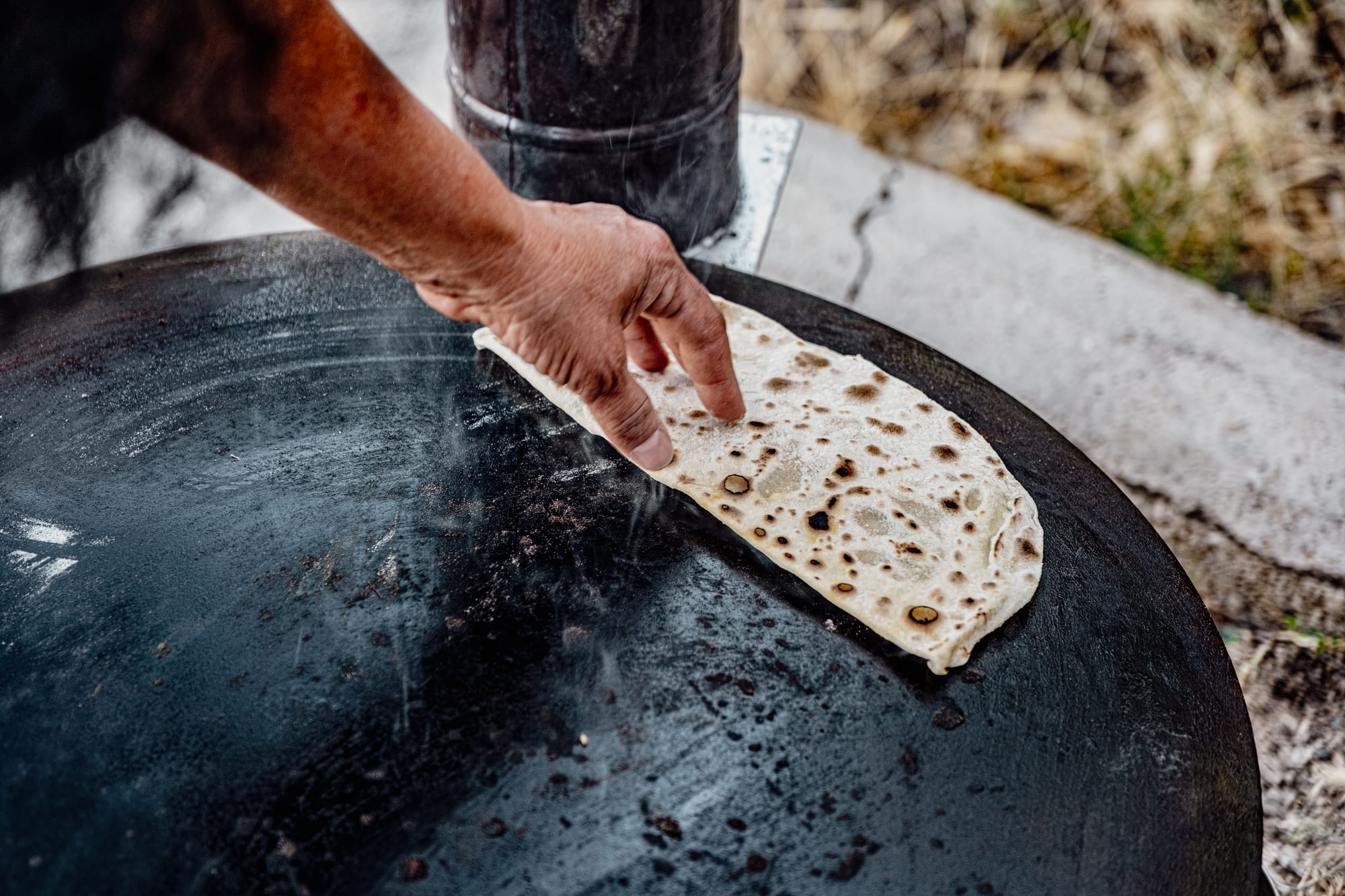
Traditional gözleme cooking over an open wood fire on a large outdoor griddle in Cappadocia
The women turned them skillfully, using flat wooden paddles, until both sides were a patchwork of golden spots. Standing near the stove, you could feel the heat radiating up, warming your face and arms. The air was rich with the scent of fire and bread, an intoxicating combination that made our stomachs rumble.
Sharing the meal
When the gözleme were ready, they were cut into halves or quarters and served on simple plates. The first bite was everything: the crisp, slightly chewy dough giving way to the soft, flavorful filling inside.
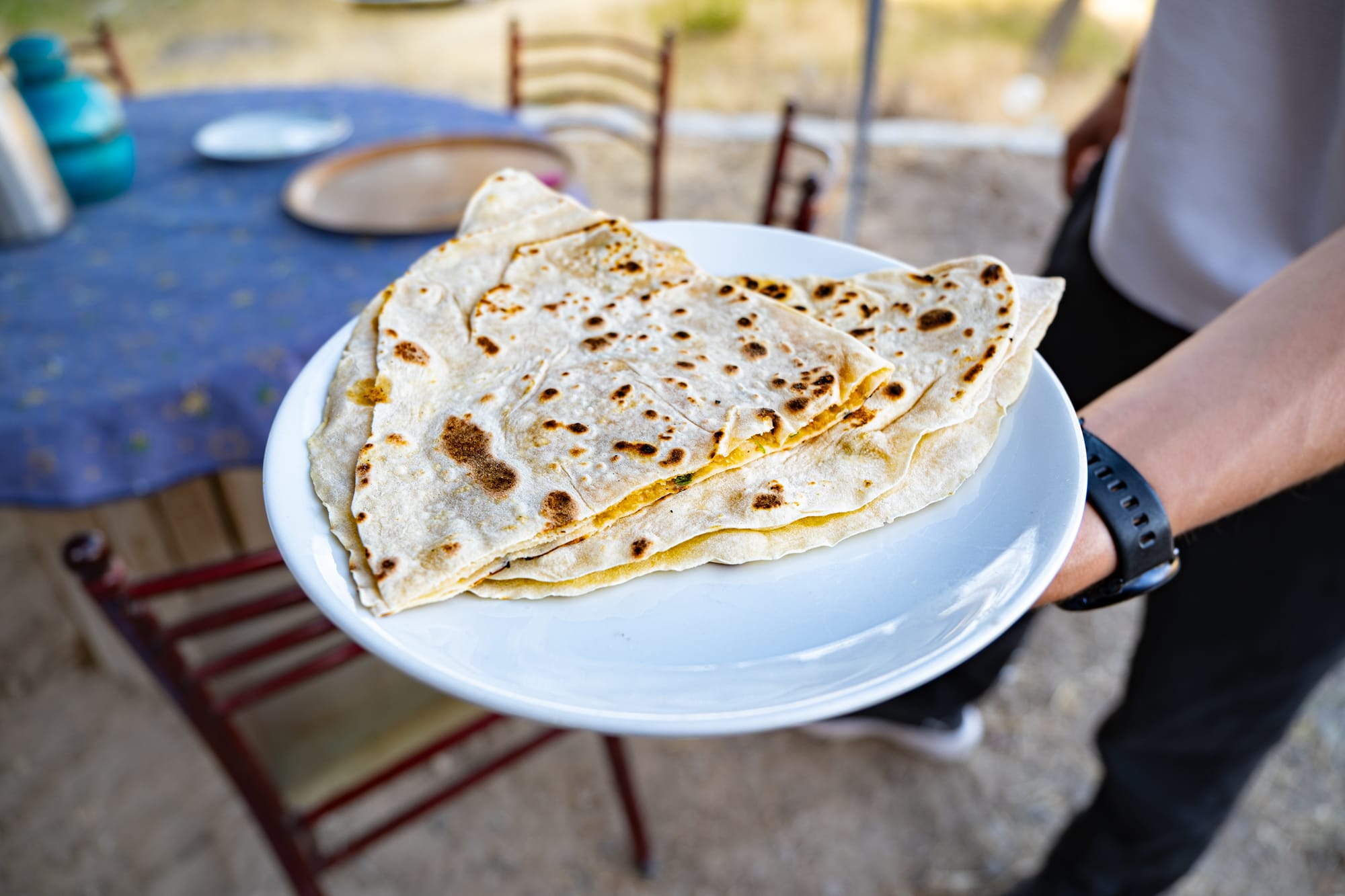
The potatoes were creamy, the herbs fresh and bright, and the whole thing had just the right hint of smokiness from the fire.
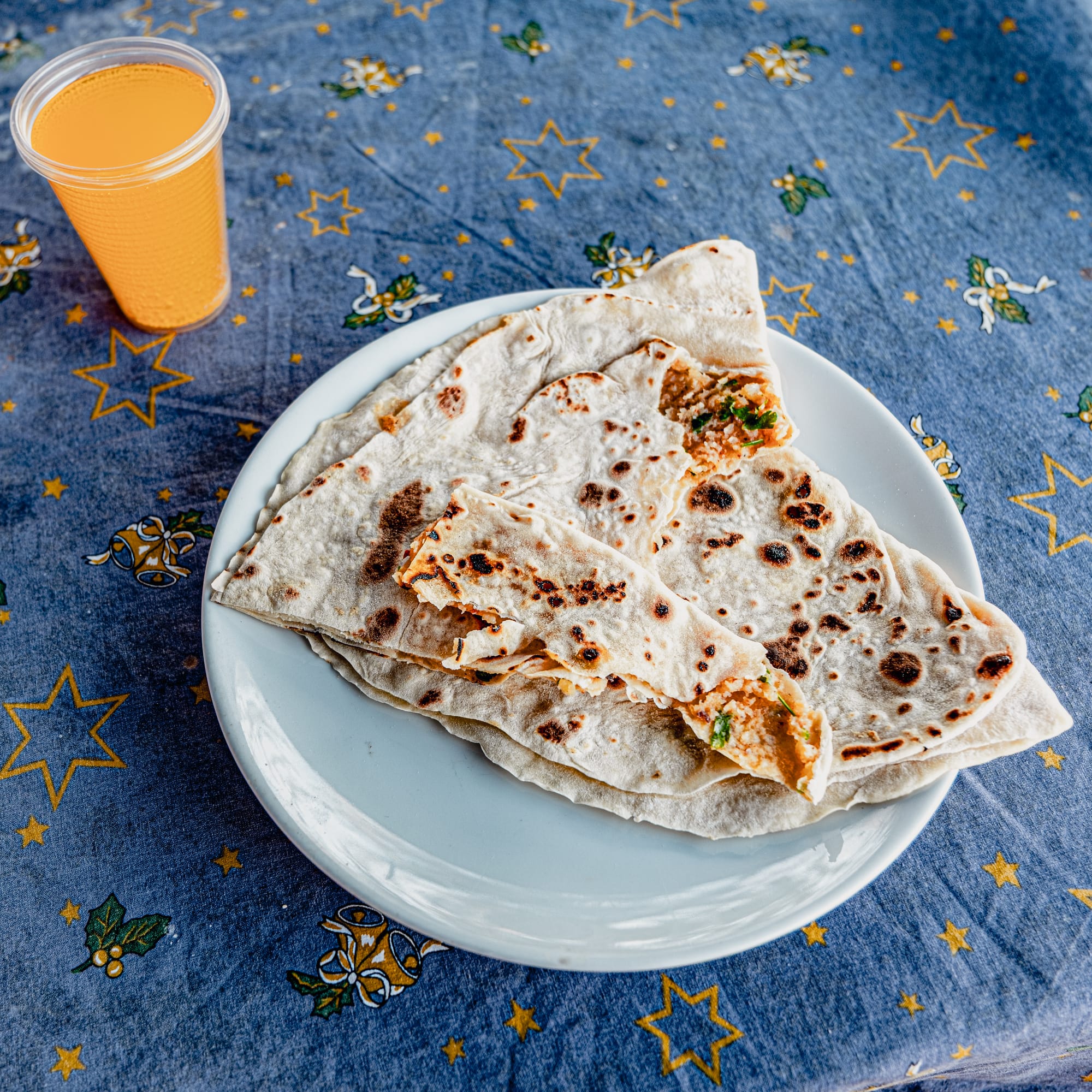
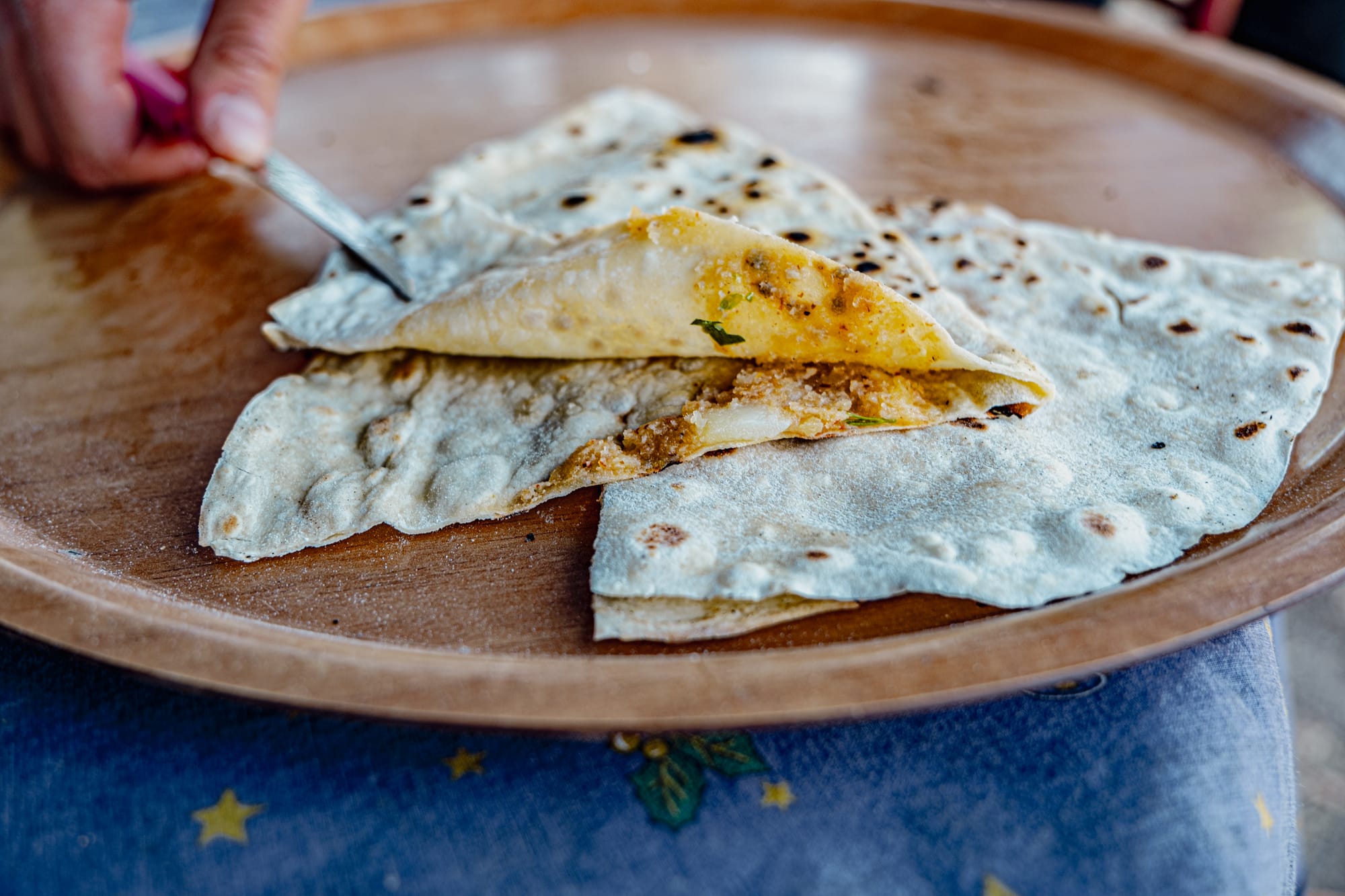
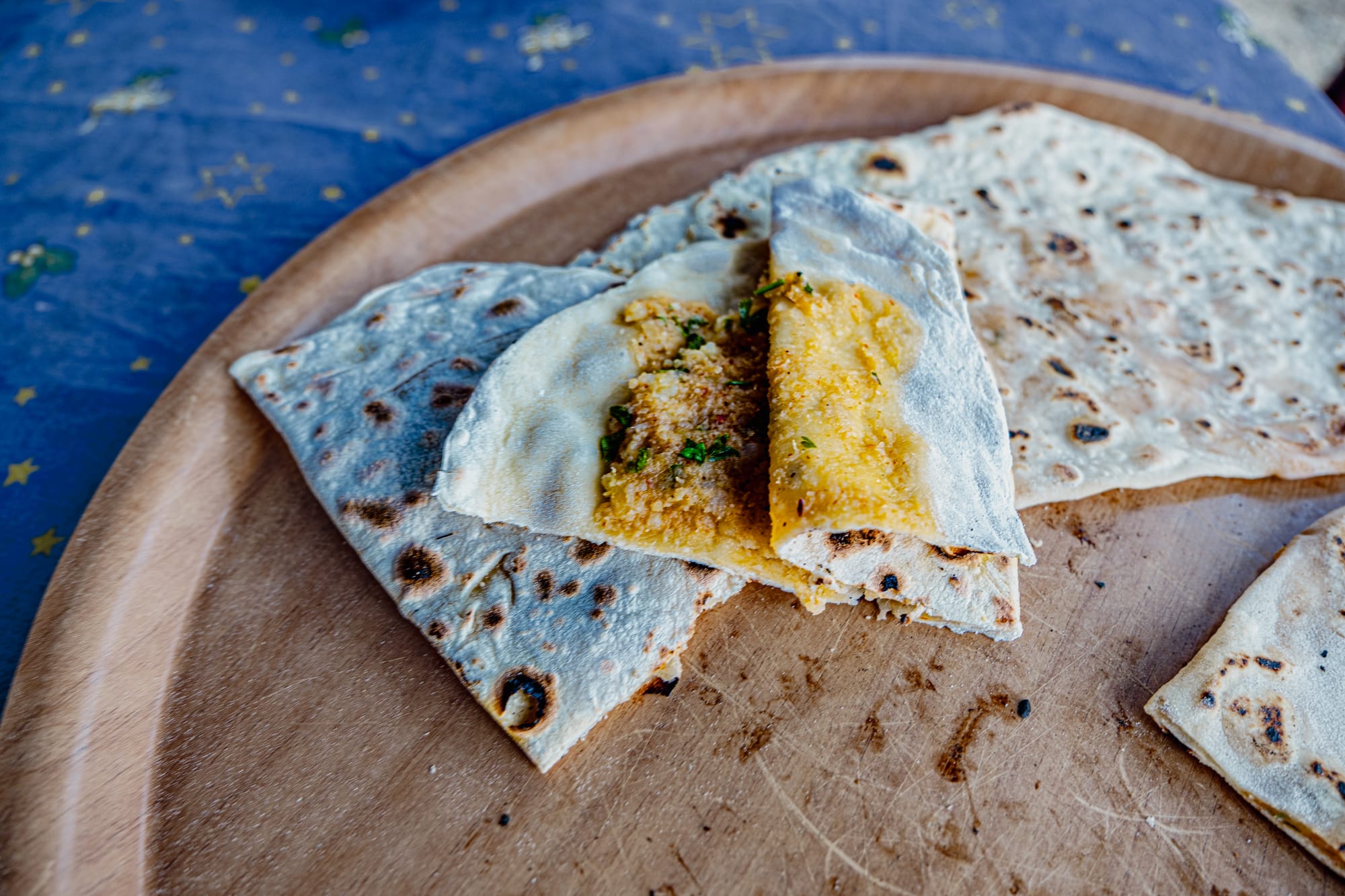
Freshly cooked gözleme filled with herby potato mash, its crispy exterior revealing the flavorful filling inside
Alongside the gözleme, the women had prepared a tangy, savory okra dish in a rich tomato sauce.
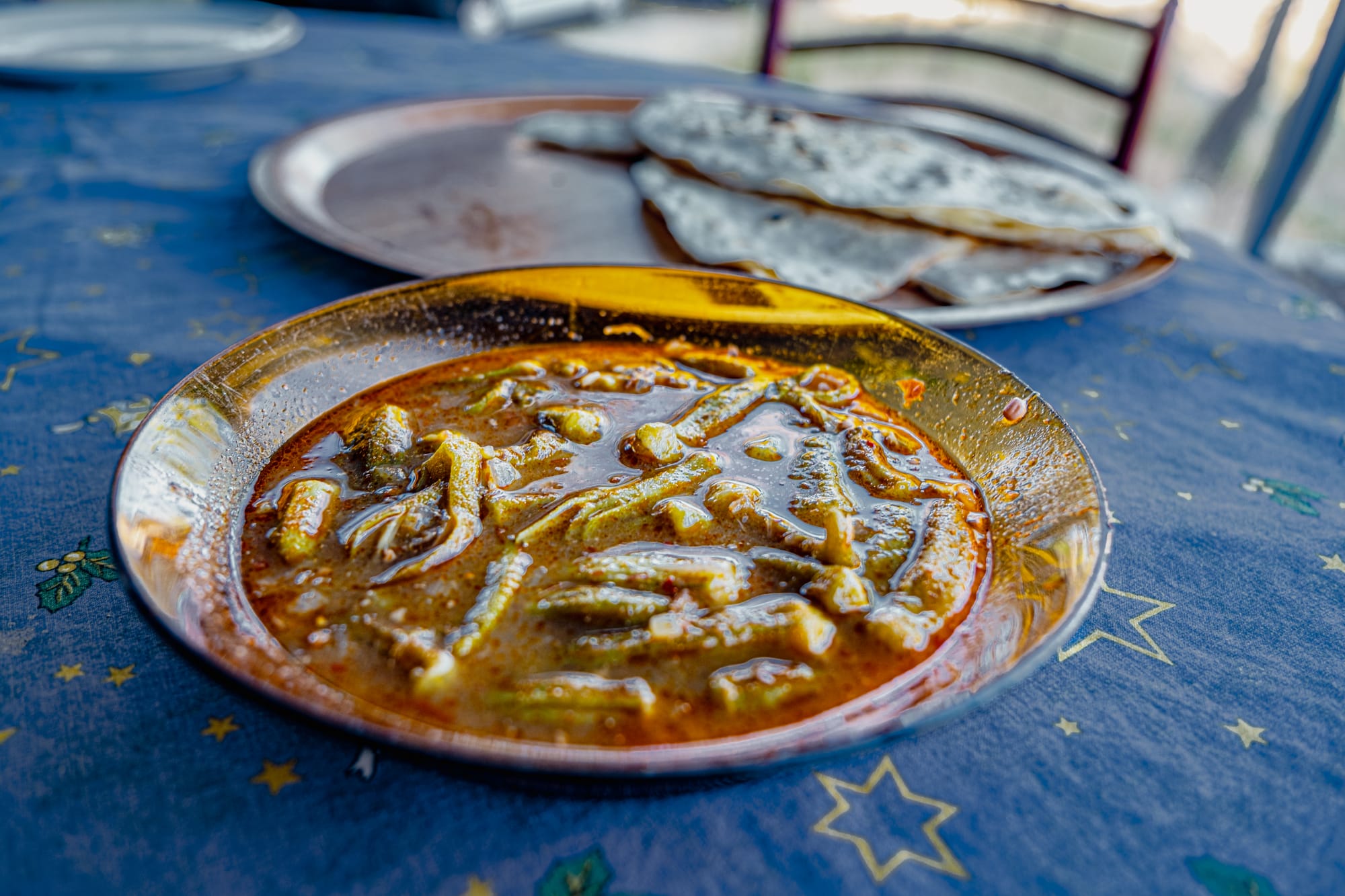
The okra was tender without being mushy, and the sauce had a deep, comforting flavor that paired perfectly with the pancakes.
More than just cooking
What made the experience so special wasn’t just the food, but the connection. As we worked, we chatted—about family, about daily life in the village, about the traditions they learned from their mothers and grandmothers. Even with the language barrier, there was an ease to the conversation, helped along by smiles, gestures, and the universal language of cooking.
It felt less like a tourist activity and more like being welcomed into someone’s home. The pace was unhurried, the atmosphere warm and genuine. We left not just with full stomachs, but with a deeper appreciation for the culture and hospitality of Cappadocia.
If you’re looking for something beyond the usual tourist activities, making gözleme with local women is an unforgettable way to immerse yourself in Turkish culture. You’ll learn a skill, taste incredible homemade food, and make real connections with the people who call this region home.
We booked our experience through this Viator tour, and we can’t recommend it enough. It’s an intimate, authentic, and incredibly tasty adventure — one you’ll remember long after you’ve left Cappadocia.






